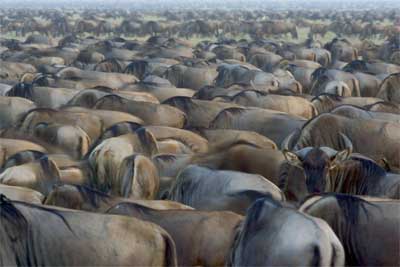 Important time markers (like birthdays, anniversaries, and the change of year) are opportunities to assess where we are and what we have accomplished in the past year, and to identify what we hope for in the coming twelve months. But in terms of planning to achieve new goals instead of just hoping for them, there’s nothing more powerful than to be on the threshold of a new year!
Important time markers (like birthdays, anniversaries, and the change of year) are opportunities to assess where we are and what we have accomplished in the past year, and to identify what we hope for in the coming twelve months. But in terms of planning to achieve new goals instead of just hoping for them, there’s nothing more powerful than to be on the threshold of a new year!As you enjoy New Year’s Eve and Day and as you enter 2008, I hope you will see this opportunity to commit yourself enthusiastically to some new goals in the mountains – targets that will keep you fit and help you stay in great health, and targets that will challenge your wilderness skills, climbing skills, and your mental capacity for making insightful judgments in complex environments.
As I am sure you know, few things in life match the sense of reward and achievement that you get when you tackle a major wilderness travel goal or climbing project and then succeed. Whatever your background and skill level at the time, the greater the challenge and the more complex the problem solving, the greater the reward always is.
So as you think about vacations and adventures that you would like to chart for yourself in 2008, consider expanding your skills, trying a new type of climbing, or making ascents in areas or technical levels that will be new for you. Whatever the program (an intro class or an advanced expedition), at AAI we are always committed philosophically and practically to helping you expand your capacity for taking on major challenges.
 There’s nothing like a personal consultation with an AAI program director to sort out good options. It’s free, there’s no obligation, and you’ll be speaking with people that are the best at their job in the nation. Remember that when you do decide to climb with AAI, one call can do it all. We can handle all the arrangements for your trip, from making travel arrangements to outfitting you with the best gear in the world – and everything in between.
There’s nothing like a personal consultation with an AAI program director to sort out good options. It’s free, there’s no obligation, and you’ll be speaking with people that are the best at their job in the nation. Remember that when you do decide to climb with AAI, one call can do it all. We can handle all the arrangements for your trip, from making travel arrangements to outfitting you with the best gear in the world – and everything in between.
 Call and use our knowledge to review your goals and options: (360) 671-1505 or 800-424-2249. Here are our specializations:
Call and use our knowledge to review your goals and options: (360) 671-1505 or 800-424-2249. Here are our specializations: Dunham Gooding & Andy Bourne: Overseas trips
Dunham Gooding & Andy Bourne: Overseas tripsColey Gentzel: Alaska/Denali, Cascades, Sierra, Colorado
Shawn Olson: Avalanche courses, backpacking trips, Kilimanjaro
Natasha Caldwell: Red Rock, Joshua Tree
We’ll enjoy speaking with you!
Dunham Gooding, Director











































